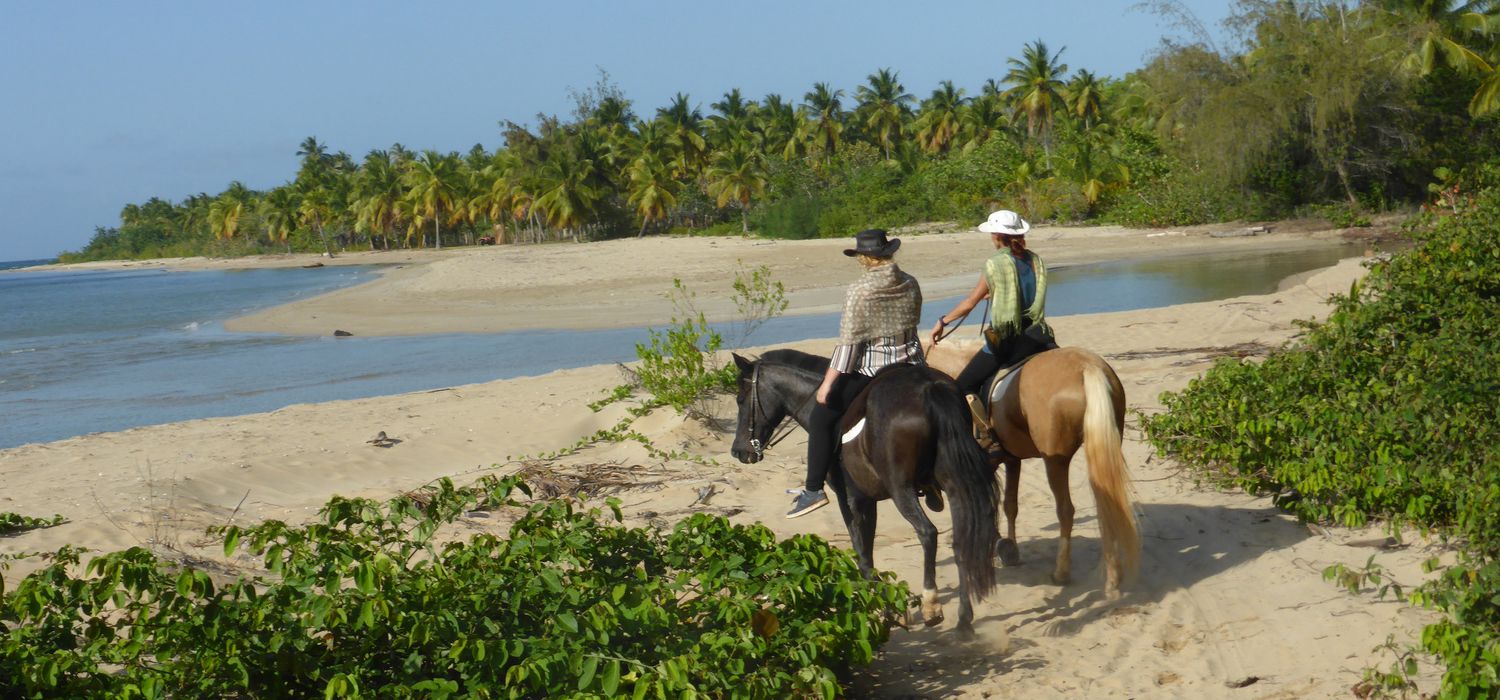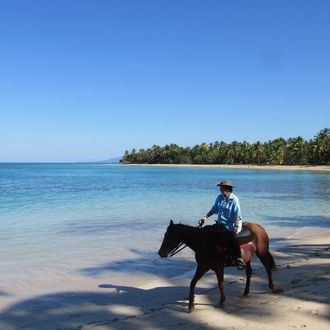Dominican Republic

The Dominican Republic is a nation on the island of Hispaniola, in the Caribbean region and boasts one of the most geographically diverse landscapes in the world, from stunning mountain scenery to desert scrublands and miles of unspoilt coastline. By both area and population, The Dominican Republic is the second largest Caribbean nation (after Cuba), with 48.445 square kilometres and an estimated 10 million people, approximately 2 million of which reside in the capital, Santo Domingo. Native Tainos once inhabited what is now the Dominican Republic and since then new communities have arisen only a few kilometres from the ruins where Christopher Columbus first ventured. The country remains the most visited destination in the Caribbean and although Spanish is the official language, English is widely spoken in major cities and tourist areas.
Read more…
The Dominican Republic is nestled between the Atlantic Ocean on the north and the Caribbean Sea to the south and as part of the Tropic of Cancer, has a breathtaking topography. Three large mountain ranges run through the island and Lake Enriquillo, the lowest point in the Caribbean, comprises one of the many lakes, lagoons and rivers that accompany the thousands of miles of unspoilt beaches. A tropical climate is enjoyed year round in the Dominican Republic. The coolest season is between November and April, and the hottest season between May and October. The average annual temperature is approximately 25°C.
The rich culture of the Dominican Republic can be enjoyed in every aspect of their food music, art and sports. As a former Spanish colony, many of the dishes you will find here carry a Latin American inspiration. Lots of rice, meat and seafood should be expected, with traditional African recipes providing a unique twist. The island is filled with many different types of bright and colourful artwork. Jewellery made out of bone, amber, horn and coconut husks can be found at local markets where the Taino influence is still celebrated. The true life of the Dominican Republic's culture however, is baseball, a major source of national pride and identity. To truly understand the depth of the Dominican people, you must experience Carnival, a culmination of all three cultures; native Taino, Spanish and African. Carnival lasts through the month of February and the streets are filled with colourful masks, music and dancing.
Although known for many years for it's sugar production, the economy of the Dominican Republic is now dominated by services. The government of the Dominican Republic is a representative democracy with a president, similar to that of the United States. Dominican Peso is the national currency, although United States dollars (USD) and euros (EUR) are also accepted at most tourist sites.
On Christopher Columbus' second voyage during 1493, he returned to what is today, the Dominican Republic bringing fruit, crops, cattle and horses, which were used for farming and gold mining. Their descendants are today's Paso Fino, a mix of several Spanish breeds whose name translates as 'fine step' in English. The Paso Fino is the oldest native breed in the Western Hemisphere an thanks to its smooth, even gate, which was inherited from the now-extinct Spanish Jennet, this breed has been named the "Rolls Royce of the riding world'. Add to that the genes of the Spanish Barb for hardiness and the Andalusian for natural presence and you get a remarkably versatile horse.
The Paso Fino generally range in size from 13.2 hands to 15.2 hands and colours run the spectrum with a variety of markings from chestnut, bay and palomino to black grey and roan. It's trail gait is a corto, which is comparable to a trot, and allows these horses to travel for hours, covering distances quickly. Paso Fino are also able to walk and canter, but surprisingly, the basic gaits of this horse; fino, corto and largo, are natural to the horse from birth. Paso Fino owners pride themselves in the naturalness of their animals and artificial training aids are not necessary to bring about this genetically inherent gait. The endurance and versatility of the Paso Fino also means it is a popular choice for ranch work throughout South America.
The Spanish Criollo breed is also commonly found in the Dominican Republic. Brawny and tenacious, the Criollo horse is famed for its exceptional stamina and resistance to disease and is therefore also a popular choice for ranch work throughout South America. As well as this, the breed whose name means 'of Spanish origin' has also contributed significantly to Argentina's world-renowned polo ponies. The Criollo horses range from 13.2 hands to 15.2 hands and despite its strong character, they are easy to train, versatile and intelligent.
Refine Search
-
 Dominican BeachesDominican Republic1 matching itineraryDiscover the crystal clear waterfalls, ancient forests, farmland and stunning beaches of the Dominican Republic on this fantastic centre based rideView Ride
Dominican BeachesDominican Republic1 matching itineraryDiscover the crystal clear waterfalls, ancient forests, farmland and stunning beaches of the Dominican Republic on this fantastic centre based rideView Ride